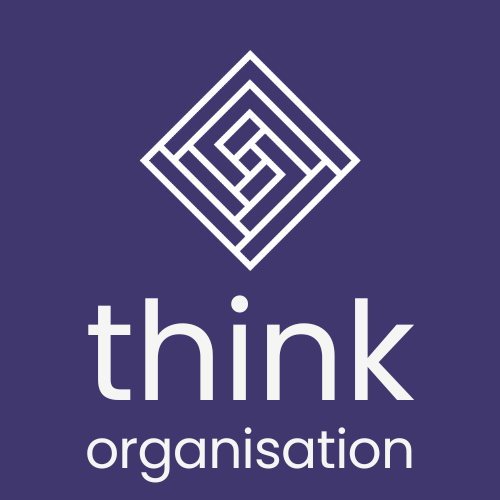Organisations need to proactively manage workplace hazards to reduce the risk of stress for employees. This is a legal requirement.
Stress is a physiological response to stressors, which can be individuals, environments or situations. Stress is the biggest cause of workplace absence, costing economies millions and with no improvement in sight now is the time for organisations to take action. In 2024, work-related stress costs the UK economy £28 billion per year (CEBR, 2024).
Work-related Stress
Work-related stress refers to the physical, emotional, and psychological strain experienced by individuals due to pressures and demands within their work environment. It arises when the demands of a job exceed an individual’s ability to cope effectively. This stress can be caused by various factors, including heavy workloads, tight deadlines, lack of control over one’s tasks, interpersonal conflicts, job insecurity, and organisational changes. Work-related stress can lead to a range of negative consequences, such as decreased productivity, increased absenteeism, burnout, physical health problems, and mental health issues like anxiety and depression.
Organisations can implement strategies to mitigate work-related stress. Examples such as promoting work-life balance, providing employee support programmes, and creating a positive and supportive work culture.
Hazards Risk Causing Stress
A Hazard is something with the potential to cause harm.
In the context of stress, a hazard can be defined as any factor or situation within the work environment that has the potential to cause stress-related harm. These hazards can encompass various aspects of the work environment, including:
- Organisational factors (such as high workloads, tight deadlines, lack of control or autonomy)
- Physical factors (such as noise, temperature, ergonomic issues)
- Interpersonal relationships (such as conflicts with colleagues or supervisors)
- Job Security (such as control, awareness, future potential)
- Workplace Demands (such as tasks, development, use of skills or strengths)
Hazards related to stress are those elements that, if not effectively managed can lead to increased levels of stress. A hazard only has the potential to cause harm, whether it does or not is down to the risk factor and the individual situation. If the hazard causes an increase in stress levels this can result in adverse effects on well-being, performance, and health. Identifying and mitigating these stress-related hazards is essential for promoting a healthier and more supportive work environment.
Managing Risks in the Workplace
A risk is the possibility of a negative impact.
Managing the risks of stress in the workplace is paramount for ensuring the well-being and productivity of employees. Organisations can adopt several strategies to effectively manage these risks.
Firstly, it’s crucial to promote open communication channels where employees feel comfortable expressing their concerns and discussing potential stressors. Prevention is always better than a cure. Many organisations invest heavily in solutions, as opposed to preventing stress in the first place. Providing training and resources on stress management techniques, such as time management, prioritisation skills, and how to be an effective leader can empower organisations to collectively reduce the risk of stress.
Additionally, implementing policies that promote work-life balance but are tailored to the needs of individuals, and the organisation, can help alleviate stress levels. It is important to understand that this is not just down to the organisation, individuals must take their own responsibility as well.
Most importantly, creating a supportive work culture that values employee well-being, recognises achievements, and fosters positive relationships among colleagues contribute to stress reduction through prevention. Regularly assessing and addressing potential, and existing, sources of stress within the organisation through surveys, focus groups, or risk assessments allows for targeted interventions. Ultimately, by proactively managing culture, organisations can help to reduce potential hazards, and decrease the associated risks, to prevent chronic stress becoming endemic to an organisation.
Indicators of Employees Suffering From Stress
- Changes in behaviour: Employees may exhibit noticeable changes in behaviour, such as becoming more withdrawn, irritable, or emotional.
- Increased absenteeism or lateness: Frequent unexplained absences, arriving late to work, or leaving early could be signs of stress affecting an employee’s ability to cope.
- Decreased productivity: A decline in work performance, missed deadlines, or reduced output may indicate that stress is impacting an employee’s ability to concentrate and complete tasks effectively.
- Physical symptoms: Employees may experience physical symptoms such as headaches, fatigue, muscle tension, gastrointestinal issues, or sleep disturbances due to stress.
- Emotional signs: Employees may display signs of stress through emotional reactions such as anxiety, frustration, mood swings, or tearfulness.
- Withdrawal from social interactions: Employees who begin to isolate themselves from colleagues or avoid social activities within the workplace may be experiencing stress.
- Increased mistakes or accidents: Stress can impair cognitive function and attention to detail, leading to an increase in errors or accidents in the workplace.
- Changes in eating habits: Stress can affect appetite, leading employees to either overeat or undereat, or make unhealthy food choices.
- Substance abuse: Some employees may turn to alcohol, drugs, or other substances as a coping mechanism for stress, which can manifest as changes in behaviour or performance.
- Complaints of physical or mental health issues: Employees may report experiencing physical or mental health problems that they attribute to stress, such as chronic pain, anxiety, or depression.
Leaders need to know and understand their employees, which is where Business Psychology can be so invaluable. Whilst these are signs an employee may be suffering from stress or burnout if these are visible then professional help should be sought. If multiple employees are suffering then this is an endemic problem and the causes (hazards) need to be identified to prevent stress re-occurring.
Think Performance. Think Excellence. Think Impact.
Check our Insights page for more valuable thought leadership.



